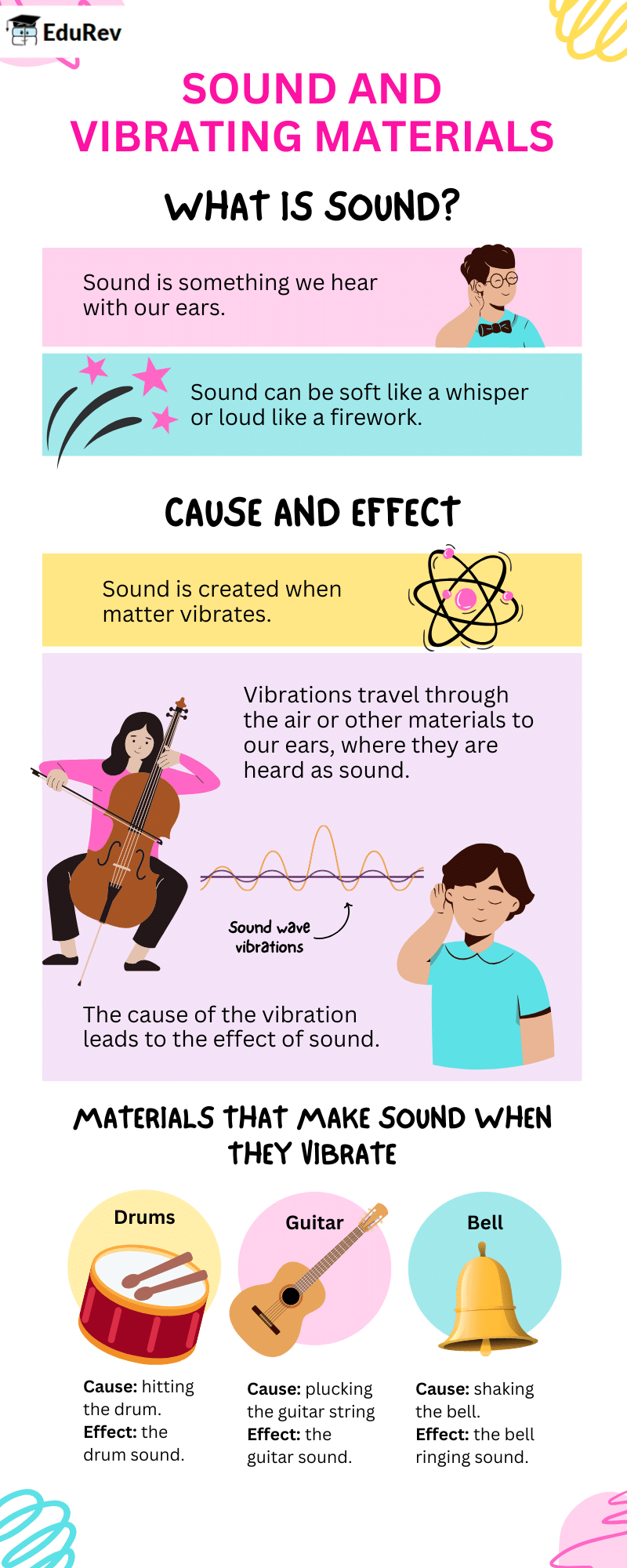Class 9 Exam > Class 9 Notes > Science Class 9 > Infographics: Sound
Infographics: Sound | Science Class 9 PDF Download

The document Infographics: Sound | Science Class 9 is a part of the Class 9 Course Science Class 9.
All you need of Class 9 at this link: Class 9
|
84 videos|478 docs|60 tests
|
FAQs on Infographics: Sound - Science Class 9
| 1. What is sound and how is it produced? |  |
Ans.Sound is a form of energy that travels in waves through a medium such as air, water, or solids. It is produced when an object vibrates, creating pressure waves in the surrounding medium. These vibrations can be generated by various sources, including musical instruments, human voices, and mechanical devices.
| 2. What are the different types of sound waves? |  |
Ans.Sound waves can be classified into two main types: longitudinal and transverse. Longitudinal waves are those in which the particle displacement is parallel to the direction of wave propagation, like sound waves in air. Transverse waves have particle displacement perpendicular to the direction of wave propagation, but they do not occur in fluids like air or water.
| 3. How does sound travel through different mediums? |  |
Ans.Sound travels at different speeds depending on the medium. It travels fastest in solids because the particles are closely packed, allowing quicker transfer of vibrations. In liquids, sound travels slower than in solids but faster than in gases. In gases, sound travels the slowest due to the larger distances between particles, which makes it harder for vibrations to pass through.
| 4. What is the relationship between frequency and pitch in sound? |  |
Ans.Frequency refers to the number of vibrations or cycles per second of a sound wave, measured in hertz (Hz). Pitch is the perceived frequency of a sound; higher frequencies correspond to higher pitches, while lower frequencies correspond to lower pitches. This relationship means that sounds with a high frequency are heard as high-pitched sounds, while those with low frequency are heard as low-pitched.
| 5. What role does amplitude play in sound? |  |
Ans.Amplitude refers to the maximum displacement of particles in a sound wave from their rest position. It is directly related to the loudness or intensity of the sound; higher amplitude means a louder sound, while lower amplitude indicates a softer sound. Thus, amplitude affects how we perceive the volume of the sound we hear.
Related Searches





















